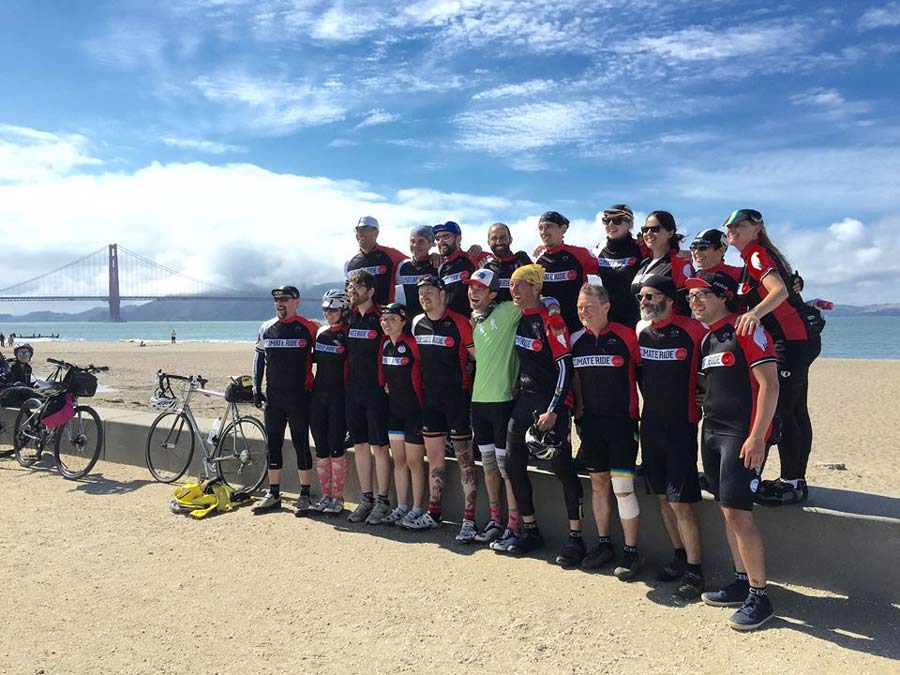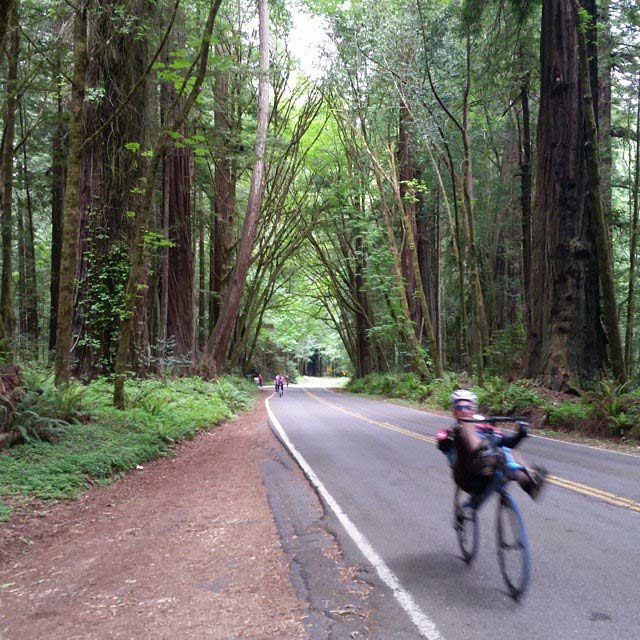A+ Bike Parking
First and foremost, quality bike parking on any campus means more than just something to lock to (that would barely qualify as a passing grade). Good bike racks and bicycle storage should be u-lock compatible, protect students’ bikes from the elements, and be numerous enough to meet demand. Everyone hates searching for a spot to park when you’re already late for class!
Bike shelters are a great example of quality bicycle storage that protects students’ bikes from bad weather. In the above photo, a student at St. Olaf College in Northfield, MN checks out a bike from the campus bike share program. The Kolo Shelter is a perfect solution for fitting two-tiered systems, like the Dero Decker, to double up on bike parking capacity.
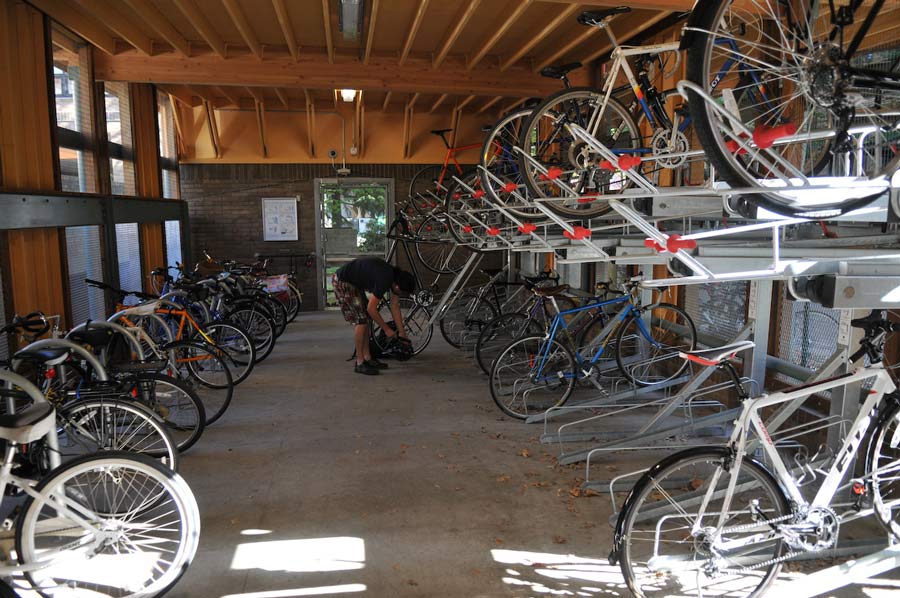 A bike room at Portland State University.
A bike room at Portland State University.It should be no surprise that bike rooms receive an “A” grade in our book. Fully enclosed, secure parking, like in Portland State University’s Bike Garage, includes both two-tier and floor-mounted parking options, which accommodates many different types of bikes. Many bike rooms are furnished with public bike repair amenities, such as the Fixit repair stand and Air Kit bike pumps.
Keep Students Rolling
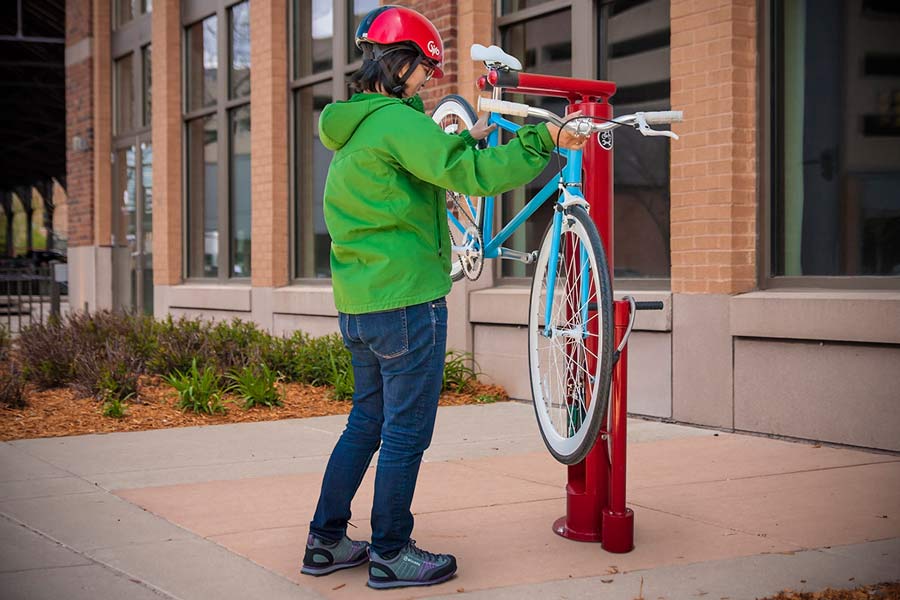 The Dero Fixit public bike repair stand.
The Dero Fixit public bike repair stand.Bike repair stands don’t only belong in bike rooms. They’re perfect for busy bike paths, in or outside student residence halls, and in central public spaces on campus. The Dero Fixit provides all the necessary tools so students can perform basic bike maintenance. Add either an Air Kit 2 or Air Kit 3, and students have the ability to repair flats or top off the air in their tires.
Public bicycle repair stands are also great educational opportunities. Many campuses teach fix-a-flat or tune-up classes at the stands, so students can learn how to use all of the tools available to them. Here are a few videos that colleges and universities made to highlight their campus bike repair:
University of Iowa, UT Arlington, Tufts University, Penn State, University of Oregon.Encourage Active Transportation
College campuses have high numbers of active people in a concentrated area. Dero ZAP is our automated commuter tracking program and is used to incentivize and gather data on students’ commutes at campuses across the country.
At the University of Minnesota, Dero ZAP has been used to track both faculty and students’ commutes since 2012. Steve Sanders, Alternative Transportation Manager at the U, says that “Since the program’s inception in 2012 we’ve seen increased bicycle mode share and a deepened cycling culture. We’ve also been extremely pleased by how many women are actively participating – over 40% of participants are women.”
For more information on Dero ZAP, watch our “How it works” video.
Cultivate Campus Identity
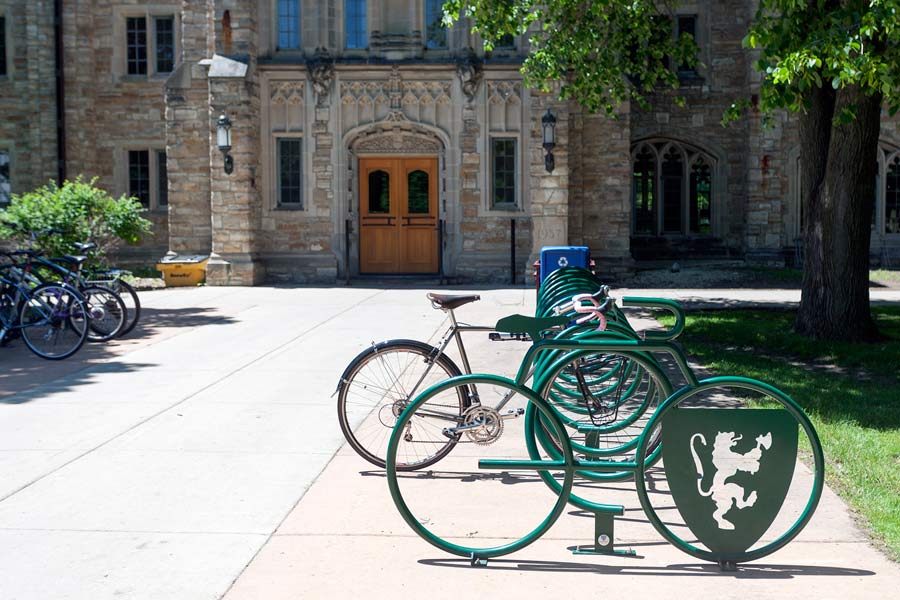 St. Olaf Collage chose to highlight their logo in this custom laser-cut Bike Bike Rack.
St. Olaf Collage chose to highlight their logo in this custom laser-cut Bike Bike Rack.As more colleges and universities invest more resources into their biking infrastructure, custom racks are a great way for schools to stand out and add a personalized touch to their bike parking. At Dero, we’ve had years of experience making custom projects a reality. All we need is your school’s logo or mascot.
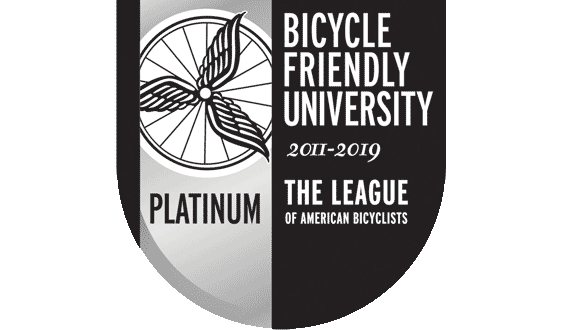
Feel confident you’ve mastered Campus Bike Parking 101? Time to take your biking game to the next level: consider applying for Bicycle Friendly University (BFU) status through the League of American Bicyclists. Dero has been a Gold certified Bike Friendly Business for over 4 years (you can read our story here), and we hope you “ace” your BFU application!

